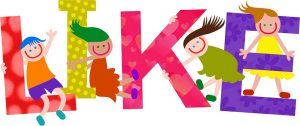
Until I had a child of my own I hadn’t thought of nursery rhymes in years. Now that I have a toddler, I think of them quite often. Nursery rhymes are not only part of my child’s home life, but they are everywhere children gather. For instance, places like church groups, playgrounds, and schools will all have children singing these songs.
The many benefits of Nursery Rhymes
Nursery rhymes have long been part of most cultures, but are they really good for our kids. Just because something has custom and habit behind it doesn’t mean it is the gold standard. Fortunately for parents like us, nursery rhymes great for our little ones. Young children, especially toddlers, get many benefits from nursery rhymes. This is why you find them in ever pre-k and in many kindergarten classes as well. Some of these benefits are social. Songs are sung together in groups in which all the children participate. Additionally they teach coordination of speech and encourage confident interactions. Other nursery rhymes, like Where is Thumbkin, teach cognitive skills like object permanence. Object permanence is a child’s ability to recognize while something is out of sight that it is still real. This come slowly for infants and toddlers but this sort of play helps build that skill. Then there are purely academic benefits. Probably the two most obvious of these are counting exercises and learning object groups. Counting songs are plentiful. One, Two, Buckle my Shoe and Ten in a Bed we all remember. Probably the most plentiful nursery rhymes, though, have to do with object grouping. That is learning what words go together to form groups of objects. Old McDonald’s Farm teaches animal groups. Eyes Fingers Knees and Toes teaches body parts. Daddy Finger teaches the family unity.
My Little One’s Favorite
Though most of the rhymes mentioned above have been around seemingly forever, Daddy Finger, also called Finger Family, is a bit of a mystery. The first mention of it is in 2007 in a YouTube video posted by user Leehosook, but since then it has become a sensation. In addition to hundreds of versions in English on YouTube (your little one need never get bored of just one!) it is also translated into many languages, such as French (as Famille de Deogit) and Spanish (as La Familia Dedo), which is very useful if you are trying to encourage bilingual skills in a young child. What is more, variations on the theme of this song are endless including dinosaurs, pets, colors, foods, holiday themes, and beloved cartoon characters. This is an especially fun rhyme because in addition to teaching vocabulary, it is very frequently played out with finger puppets. So this is a very active song which encourages fine motor development in addition to vocabulary, and memorization. Also it is fun. Fun is a quality that should never be overlooked.